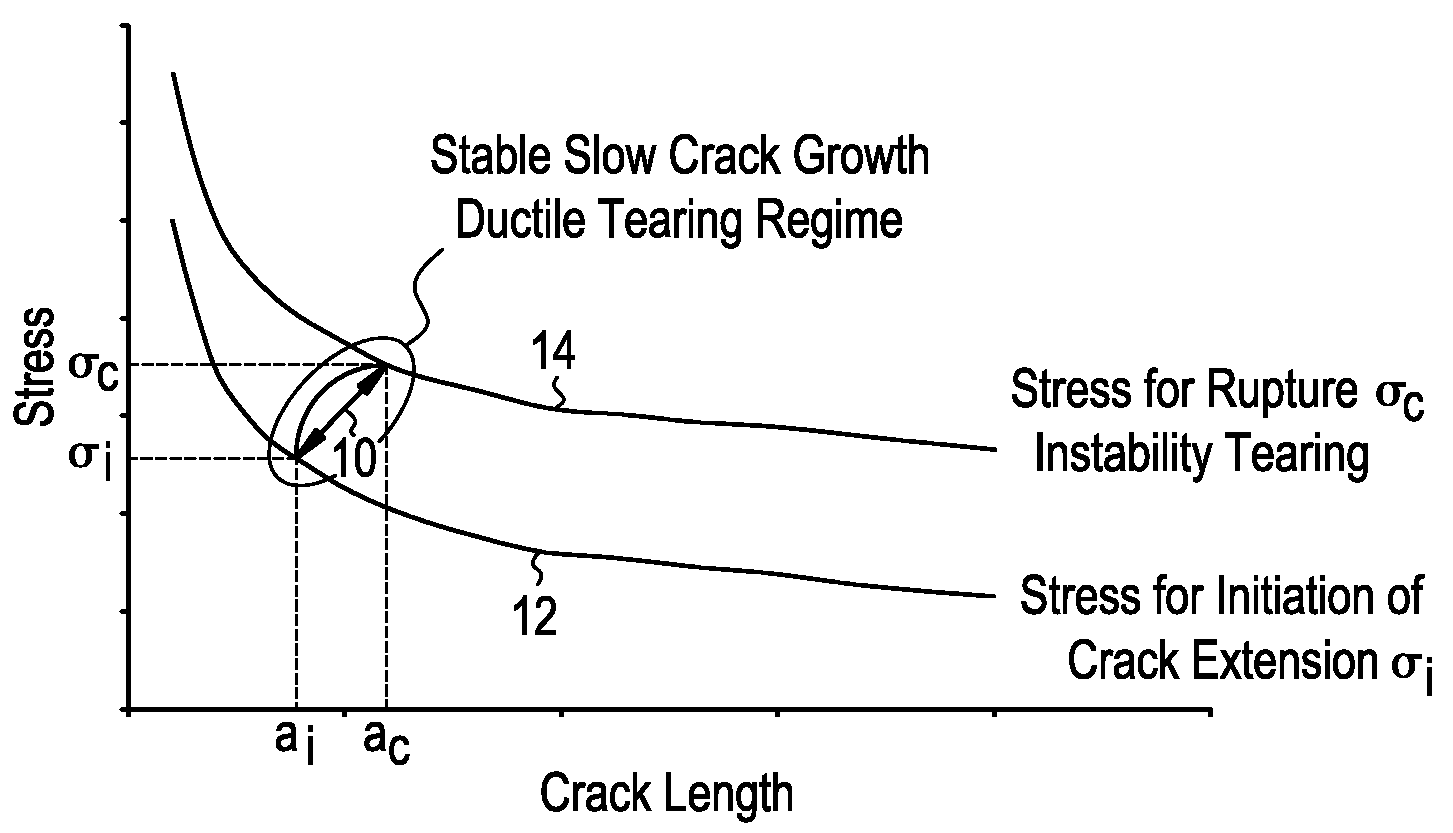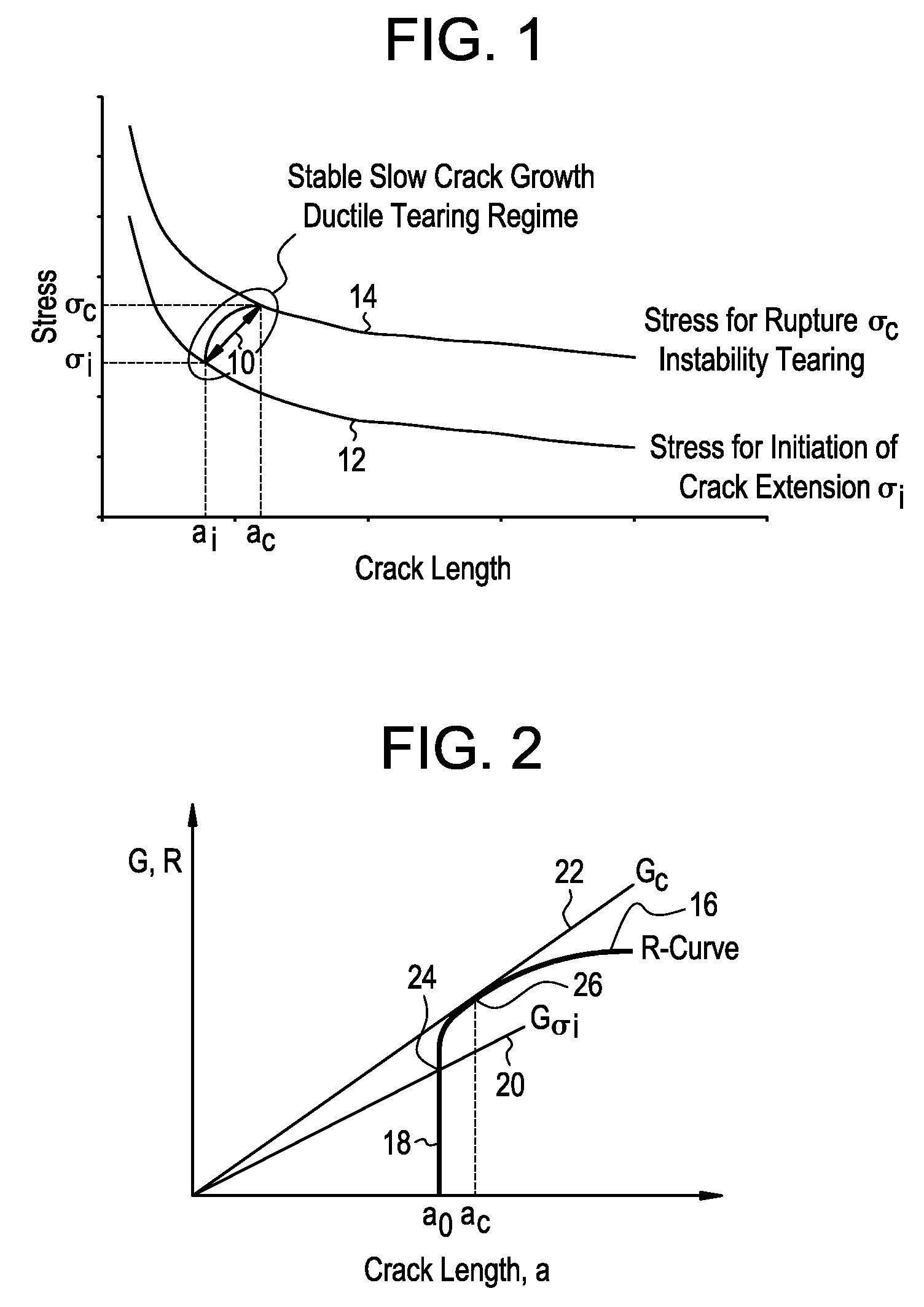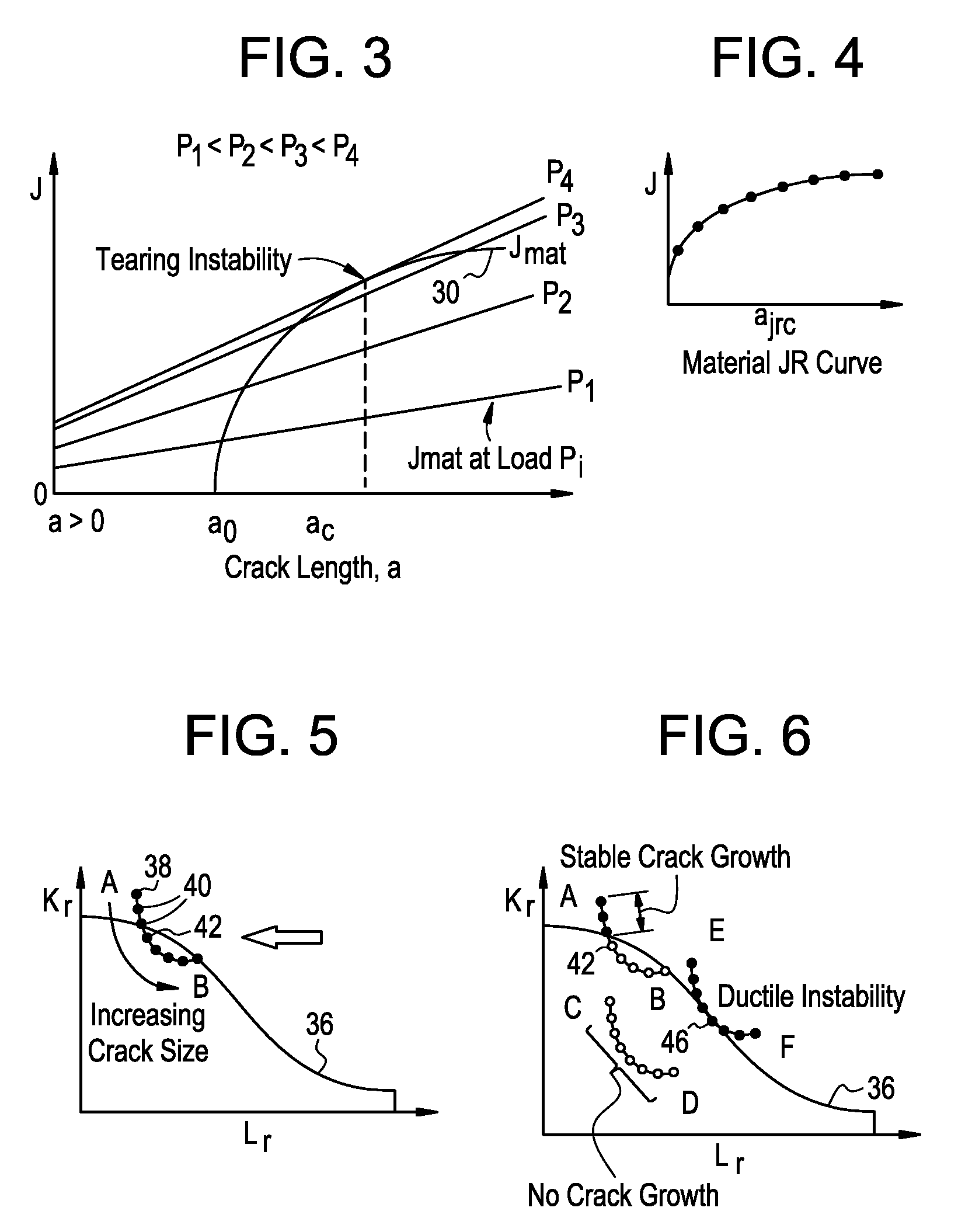Method for detecting leak before rupture in a pipeline
a pipeline and leak detection technology, applied in the direction of mechanical measurement arrangements, mechanical roughness/irregularity measurements, instruments, etc., can solve the problems of pipeline leakage, external stress corrosion cracking (scc), and cracking or cracking fields that can initiate and grow
- Summary
- Abstract
- Description
- Claims
- Application Information
AI Technical Summary
Benefits of technology
Problems solved by technology
Method used
Image
Examples
Embodiment Construction
[0024]The acceptance criteria for a crack-containing structure in accordance with the API 579 assessment procedures and associated assessment procedures, such as, R6 and BS 7910, is analyzed against the initiation of crack extension rather than crack instability (rupture). Since ductile materials in a plane stress loading condition (e.g., thin wall for linepipe ferrite steels on the upper shelf of a ductile-brittle transition curve) often exhibit extensive plastic deformation prior to rupture, the assessment methodology in such a case can be extremely conservative and may not be appropriate for predicting actual failure conditions like leak-before-rupture.
[0025]To develop a tearing instability model for leak-before-rupture assessment, the ductile tearing and tearing instability process is reviewed. This process is graphically illustrated in FIG. 1, where a crack with an initial length a begins to extend at αi (e.g., initiation of crack growth) at a certain stress σi If the stress is...
PUM
 Login to View More
Login to View More Abstract
Description
Claims
Application Information
 Login to View More
Login to View More - R&D
- Intellectual Property
- Life Sciences
- Materials
- Tech Scout
- Unparalleled Data Quality
- Higher Quality Content
- 60% Fewer Hallucinations
Browse by: Latest US Patents, China's latest patents, Technical Efficacy Thesaurus, Application Domain, Technology Topic, Popular Technical Reports.
© 2025 PatSnap. All rights reserved.Legal|Privacy policy|Modern Slavery Act Transparency Statement|Sitemap|About US| Contact US: help@patsnap.com



